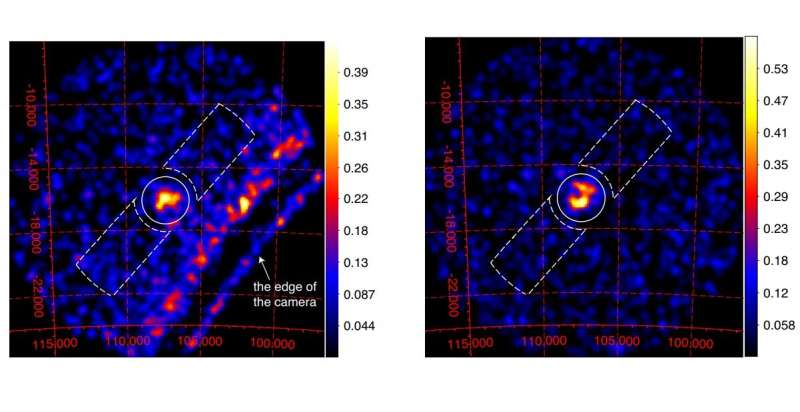July 12, 2022 report
New supergiant fast X-ray transient discovered

An international team of astronomers reports the detection of a new supergiant fast X-ray transient with the Monitor of All-sky X-ray Image (MAXI) instrument. The newfound transient, designated MAXI J0709−159, was identified in the constellation Canis Majoris and lasted about three hours. The finding was detailed in a paper published July 5 on the arXiv pre-print server.
Generally, X-ray binaries are composed of a normal star or a white dwarf transferring mass onto a compact neutron star or a black hole. Based on the mass of the companion star, astronomers divide them into low-mass X-ray binaries (LMXB) and high-mass X-ray binaries (HMXB).
Supergiant fast X-ray transients (SFXTs) are a class of HMXBs with supergiant companions. They showcase significant X-ray flaring activity, experiencing outbursts with very fast rise times and typical durations of a few hours that are associated with supergiant stars.
Now, a group of astronomers led by Mutsumi Sugizaki of National Astronomical Observatories in Beijing, China, has detected a new SFXT—MAXI J0709−159 (or MAXI J0709 for short). The transient, lasting approximately three hours, was identified on January 25, 2022, by the MAXI instrument onboard the International Space Station (ISS). Follow-up observations of this source have been also conducted, using NuSTAR, Swift, and eROSITA, in order to determine its properties.
"The source was first detected during the scan transit at UT 10:42, but not detected in the next scan transit at UT 12:15. However, it was detected again in the other next scan at UT 13:48 (Kobayashi et al. 2022). This means that the source exhibited a large intensity variation within the 3 hours," the researchers explained.
Besides its short duration, MAXI J0709 exhibited rapid variability accompanied with spectral change, and large luminosity swing from the quiescence to the flare peak. The position of MAXI J0709 turned out to be consistent with its optical counterpart—LY CMa (also known as HD 54786), which has been identified as a B supergiant star (of spectral type B1.5I) and also a Be star. The transient had an instantaneous 4–10 keV flux at a level of approximately 270 mCrab.
According to the authors of the paper, the findings indicate that MAXI J0709 is indeed an SFXT. However, LY CMa appears to be surrounded by a complex circumstellar medium including dense clumps. This suggests that MAXI J0709 should be classified as an evolved Be fast X-ray transient.
"MAXI J0709 should have an intermediate character between Be X-ray binaries (BeXBs) and supergiant X-ray binaries (sgXBs)," the researchers noted.
They added that BeXBs usually cause outbursts lasting for several weeks to a few months, but few objects of this type, such as X Persei, are known to showcase short time-scale variabilities like flares. Therefore, MAXI J0709 could be considered as an extreme case of an BeXB.
More information: Mutsumi Sugizaki et al, Discovery of a new supergiant fast X-ray transient MAXI J0709−159 associated with the Be star LY CMa. arXiv:2207.01969v2 [astro-ph.HE], arxiv.org/abs/2207.01969
© 2022 Science X Network





















